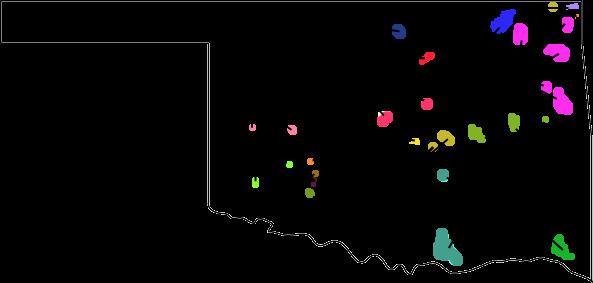Native speakers 85 (2007) | ISO 639-3 oma | |
 | ||
Ethnicity 525 (365 Omaha, 160 Ponca, 2010 census) Language family SiouanWestern SiouanMississippi ValleyDhegihaOmaha–Ponca | ||
Omaha–Ponca is a Siouan language spoken by the Omaha (Umoⁿhoⁿ) people of Nebraska and the Ponca (Paⁿka) people of Oklahoma and Nebraska. The two dialects differ minimally but are considered distinct languages by their speakers.
Contents
Use and revitalization efforts
There are today only 60 speakers of Omaha, and 25 fluent speakers, all over 60; and a handful of semi-fluent speakers of Ponca.
The University of Nebraska offers classes in the Omaha language, and its Omaha Language Curriculum Development Project (OLCDP) provides Internet-based materials for learning the language. A February 2015 article gives the number of fluent speakers as 12, all over age 70, which includes two qualified teachers; the Tribal Council estimates about 150 people have some ability in the language. The language is taught at the Umónhon Nation Public School. An Omaha Basic iPhone app has been developed by the Omaha Nation Public Schools (UNPS) and the Omaha Language Cultural Center (ULCC). Members of the Osage Nation of Oklahoma have expressed an interest in partnerships to use the language as a basis of revitalizing the Osage language, which is similar.
Consonants
One consonant, sometimes written l or th, is a velarized lateral approximant with interdental release, [ɫᶞ], found for example in ní btháska [ˌnĩ ˈbɫᶞaska] "flat water" (Platte River), the source of the name Nebraska. It varies freely from [ɫ] to a light [ð̞], and derives historically from Siouan *r.
Initial consonant clusters include approximates, as in /blᶞ/ and /ɡlᶞ/.
Consonants are written as in the IPA in school programs, apart from the alveopalatals j, ch, chʰ, zh, sh, shʼ, the glottal stop ’, the voiced velar fricative gh, and the dental approximant th. Historically, this th has also been written dh, ð, ¢, and the sh and x as c and q; the tenuis stops p t ch k have either been written upside-down or double (pp, kk, etc.). These latter unusual conventions serve to distinguish these sounds from the p t ch k of other Siouan languages, which are not specified for voicing and so may sound like either Omaha–Ponca p t ch k or b d j g. The letters f, l, q, r, v are not used in writing Omaha-Ponca.
Vowels
The simple vowels are /a, e, i, u/, plus a few words with /o/ in men's speech. The letter ‘o’ is phonemically /au/, and phonetically [əw].
There are two or three nasal vowels, depending on the variety. In the Omaha and Ponca Dhegiha dialects *õ and *ã have merged unconditionally as /õ/, which may range across [ã] ~ [õ] ~ [ũ] and is written ⟨oⁿ⟩ in Omaha and ⟨aⁿ⟩ in Ponca. The close front nasal vowel /ĩ/ remains distinct.
Nasalized vowels are fairly new to the Ponca language. Assimilation has taken place leftward, as opposed to right to left, from nasalized consonants overtime. "Originally when the vowel was oral, it nasalized the consonant and a nasalized vowel never followed suit, instead, the nasalized vowel came to preceded it"; though this is not true for the Omaha, or its 'mother' language."
Omaha/Ponca is a tonal language that utilizes downstep (accent) or a lowering process that applies to the second of two high-tone syllables. A downstepped high tone would be slightly lower than the preceding high tone.”: wathátʰe /walᶞaꜜtʰe/ "food", wáthatʰe /waꜜlᶞatʰe/ "table". Vowel length is distinctive in accented syllables, though it is often not written: [nãːꜜde] "heart", [nãꜜde] "(inside) wall".
Common Siouan vowels may be either long or short.
Omaha-Ponca is a daughter language to the Siouan mother language, but has developed some of its own rules for nasalization and aspiration. What were once allophones in Proto-Siouan have become phonemes in the Omaha–Ponca language.
Many contrasts in the Omaha/Ponca language are unfamiliar to speakers of English. Below are examples of minimal pairs for some sounds which in English would be considered allophones, but in Omaha/Ponca constitute different phonemes:
In many languages nasalization of vowels would be a part of assimilation to the next consonant, but Omaha/Ponca is different because it is always assimilating. For example: iⁿdáthiⁿga, meaning mysterious, moves from a nasalized /i/ to an alveolar, stop. Same thing happens with the word iⁿshte, meaning, for example, has the nasalized /i/ which does not assimilate to another nasal. It changes completely to an alveolar fricative.
Morphology
Omaha Ponca language adds endings to its definite articles to indicate animacy, number, position and number. Ponca definite articles indicate animacy, position and number
Syntax
Omaha-Ponca's syntactic type is subject-object-verb.
